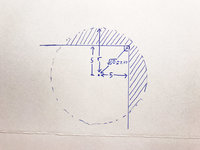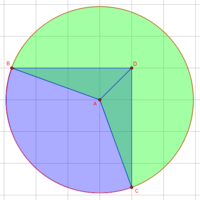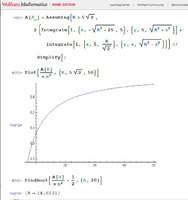colgate2004
New member
- Joined
- Jan 14, 2021
- Messages
- 5
Hi all,
Thanks in advance for the help with this. This may be a more involved/difficult one than is common here.
A circle is centered a distance of 5 (feet, inches, whatever) away from both of two perpendicular lines (therefore sqrt50 or ~7.07 away from their intersection). Find the radius such that half of the area of the circle (0.5A) lies on one side of the lines, with the other 50% lying on the other side.
(Diagram attached)
I'm completely stumped here. Help appreciated!
Thanks in advance for the help with this. This may be a more involved/difficult one than is common here.
A circle is centered a distance of 5 (feet, inches, whatever) away from both of two perpendicular lines (therefore sqrt50 or ~7.07 away from their intersection). Find the radius such that half of the area of the circle (0.5A) lies on one side of the lines, with the other 50% lying on the other side.
(Diagram attached)
I'm completely stumped here. Help appreciated!



